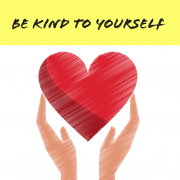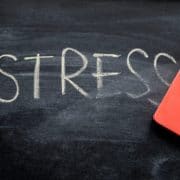Activate your Genes
 We have all heard of exercise is important and that a sedentary lifestyle has been linked to diseases. Recent evidence has shown that an active lifestyle can increase your life by up to 9 years.
We have all heard of exercise is important and that a sedentary lifestyle has been linked to diseases. Recent evidence has shown that an active lifestyle can increase your life by up to 9 years.
The World Health Organisation offer guidelines on physical activity which are detailed below but first it helps understand a little about the evolution of our species in order to understand why the way we move (as opposed to just doing any exercise at all) is so important.
Click here or scroll down to view the infographic
The way genes adapt to a changing environment is to mutate. Our species, ‘homo’ has been around for about two million years, with modern humans (homo sapiens) existing for around 200,000 years. The last significant gene that mutated (called the M168), occurred 45,000 to 50,000 years ago!
Since that time, there have been a few mutations, such as those to allow us to digest grains and dairy, but all in all, our genome hasn’t changed. However, our environment has changed (but we haven’t adapted to it).
Our ancestors moved a lot – today, however, many of us work in offices, call centres and due to our increasingly sedentary lifestyle, we move a lot less.
Steps
To be in line with our hunter-gatherer predecessors, we would need to take between 18,000 and 22,000. In fact, the average Australian and British office worker take just 3,000 to 5,000 steps per day. This is a significant shortfall and our health is suffering as a result.
Exercise is a powerful driver of gene expression and the famous American researcher and cardiologist Frank Booth once said,
‘We know of no single intervention with greater promise than physical exercise to reduce the risk of virtually all chronic diseases simultaneously’.
Incidental exercise
However, before you bring up lack of time to get to the gym, it’s important to understand that physical activity does not just mean an hour of sport/gym so many times a week or hitting a high step count. Both the global and Australian guidelines recommend those 18-64 years od:
- Be active each day
- Accumulate 15–300 minutes of moderate intensity each week
- Accumulate 75-150 minutes of vigorous intensity a week
- OR an equivalent of both moderate and vigorous
- Do muscle strengthening activities at least 2 days each week
So, what does all this mean? Many of us are relying on 10,000 steps each day for health benefits, so where does that fit in with the recommendations? And what does ‘be active everyday’ look like for you?
To simplify things, we have created rituals around ‘Active Minutes’ to minimise the gap between 10k steps and vigorous exercise. We show you the reduction you achieve to your BioAge from movement in the shape of the ‘Active Minutes Ritual’ (this encompasses steps, movement snacks and high/moderate intensity activity) rather than relying on calculating your activity themselves.
A few ideas to help you increase your active minutes:
- At a minimum, take 10,000 steps per day (or 70,000 a week). A great way to keep track is with a device such as a Fitbit, Garmin or Jawbone Up.
- Introduce quick bursts of movement throughout the day (what we like to call Movement Snacks). Use TV advert breaks to do squats, push-ups or 30-second sprints.
- Do three to five workouts per week – ideally a combination of vigorous activity and strength sessions. If you don’t view yourself as a ‘workout person’ don’t worry, workouts can be short and sharp and can be completed anywhere without equipment – our timed Ritualize workout videos are a great start!
- Don’t sit for prolonged periods, as this along is a risk for chronic disease. Ensure you get up and move a little every 30 minutes or so.
What’s your personal target?

See how many active minutes you need to hit to reduce your BioAge each day by clicking Active Minutes on your Ritual Board and you’ll find it at the top of the page (on both app and desktop). What’s important for many people is you don’t need to be going to the gym for an hour every day to gain benefits of physical activity – all movement counts!





 Athletes regularly practise mental rehearsal, or what we like to call
Athletes regularly practise mental rehearsal, or what we like to call 



 WHY DOES IT WORK?
WHY DOES IT WORK?




 Most of us think we need to sweat it out at the gym or go for a long run to be active and if we miss those opportunities due to our busy lives, we beat ourselves up. What counts as exercise has been institutionalised to the point that if it’s not a dedicated chunk of time in a dedicated place, it doesn’t count. There are a lot of ‘should’s’ going on – I should exercise, I should go to the gym. It’s these ‘should’s’ that can set us up to fail, over and over again. Sound familiar?
Most of us think we need to sweat it out at the gym or go for a long run to be active and if we miss those opportunities due to our busy lives, we beat ourselves up. What counts as exercise has been institutionalised to the point that if it’s not a dedicated chunk of time in a dedicated place, it doesn’t count. There are a lot of ‘should’s’ going on – I should exercise, I should go to the gym. It’s these ‘should’s’ that can set us up to fail, over and over again. Sound familiar?
